How Do Binaural Beats Affect Your Brain?
For centuries, we have known the remedial virtues of music. It enhances motivation, treats depression, and boosts our thinking capacities. Sounds of nature or white noise may have a calming effect and help us sleep, as many people know. Are you aware of the latest research on binaural beats? Medical science places great hopes in this phenomenon.
Cognitive and psychological disorders have become a huge problem for humanity lately. Depression, dementia, and neurological diseases have not found their universal cure yet. Can the sounds help? Upbeat songs can elevate moods for some time, and certain music induces concentration and brain productivity. So why not think about creating some acoustic therapy that can completely heal mental illnesses? Instead of pills and injections, a patient listens to some sounds twice a day, thus maintaining healthy brain performance. It sounds like a fairy tale, but only for now. In the future, we believe, this will come true, as lots of scientists are working on this concept.
The idea is not new – it is almost two hundred years old. In the early nineteenth century, the Prussian physicist Heinrich Wilhelm Dove discovered the binaural beats, but he did not find any practical implementation for his findings. Much later, in 1973, the Scientific American magazine published a short article by Dr. Oster. “Auditory beats in the brain” explained the nature and the mechanism of binaural beats, how they work, and what they can do with a person’s mind. He claimed that by using this effect, any individual can alter brain waves in a trice and stay in the desired condition as long as it is needed.
Gerald Oster did not go any further than using the beats as an instrument for diagnostics and brain research. Could he even imagine where the evolution of his findings would lead? Ongoing studies are trying to make the binaural beats a sort of silver bullet for depression, low focus, anxiety, sleeplessness, bad memory, etc. The experts believe that they are on the verge of a new age in medicine — digital auditory cures for mental and other illnesses. They expect the sounds to make people healthier, smarter, stronger, and happier. Let’s see if these expectations are reasonable.
What Are Binaural Beats?
So much talk about these binaural beats, but what are they actually? Imagine you are listening to some music, and both loudspeakers produce almost the same sound, but the left one gives off a little bit lower frequency. When the waves from the speakers interact, their mix generates the beat which was not in either of the original tracks. This beat will have the frequency equal to the difference between the sounds from the loudspeakers. It will be actually audible, you will hear the rhythm as the music wanes and waxes. This effect is called monaural beat.
Let’s do the same experiment, but now you need to use your headphones. If you put on two coherent sine waves with slightly different frequencies into each ear, you will still hear the beat. How come? The sounds do not interact anymore, they do not mix! You are right, this time you do not hear this beat with your ears, you sense it inside your brain! It sounds completely real, but if you take off one earphone and then the other, in both cases there won’t be any beat. It is only an illusion, perceived by your mind.
To make it perceptible, both left and right tracks should not have frequencies higher than 1000 Hz and the difference between them should not be more than 30 Hz (Hz stands for hertz, the international unit to measure frequency. 1 Hz equals 1 cycle per second). More precisely, if you play a 200 Hz tone in the right ear and 205 Hz in the left one, your brain will perceive the 5 Hz beat. This in turn will put your brain into the state of sleep, deep relaxation, or meditation. To understand how it happens, we need to see what brainwaves are, and how they synchronize with the external stimuli.
Brain Waves
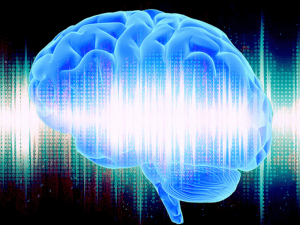
- delta waves have a frequency less than 4 Hz, people with such brain activity are in deep sleep, they cannot move their bodies and do not have dreams;
- theta waves are characteristic of REM (rapid eye movement) sleep, when we have vivid dreams and our muscle function is inhibited. Some meditation practices may induce theta waves, too. Their frequencies are from 4 to 7 Hz;
- alpha neural oscillations are the waves produced by neurons in the occipital lobe. They range from 8 Hz to 13 Hz. Alpha rhythm is associated with the wakeful relaxed state, they occur when the eyes are closed and the mind is not engaged in anything;
- the frequency between 14 and 30 Hz is characteristic of higher mental processes, focus, attention, and alertness. Such waves are identified as beta. The brain induces them when the eyes are open and the brain is solving complex tasks. For example, when we learn something, work on projects, perform operations, or analyze information, our central and anterior lobes of the brain emit beta waves;
- gamma waves are everything above 30 Hz, they are related to the highest concentration, strong emotions, memorization, etc. When the brain produces them, it is in its most active state.
We still do not know all about the brainwaves and what they really mean for us. The ongoing research proves the great functional value of brain oscillations, but still cannot decode the role of all waves.
Brainwave Entrainment
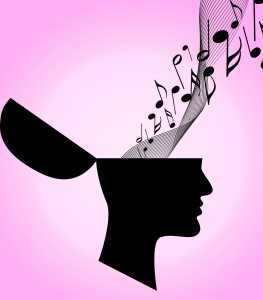
It happens because our brain entrains to the sounds. The beats in the songs or soundtracks have certain frequencies, and the brain syncs its neural activity with what it hears. We all start bobbing heads or tapping feet when we hear the music. This is exactly what happens with the neurons — the rhythm of the soundtrack entrains their activity. A whole branch of medical science, music therapy, is based on this capacity of the sound. This brings us directly to the mechanisms employed by binaural beats to alter the brain performance. It turns out, the illusive sounds influence the central nervous system (further referred to as CNS) no less than the real ones.
How Do They Work?
Everything is rather simple when you know the necessary frequency and its impact on the brain. Let’s say we need the beats that can help us relax and meditate. The brainwaves that correspond to these activities are alpha ones. In order to produce the binaural beats with the same frequency, you need two sine waves with the difference between 8 and 13 Hz. We have already used the 200 Hz example, let’s play this sound in the right ear. Thus, we will need 208 Hz in the right one, and when both are on, the listener will hear the binaural beats that can alleviate anxiety and promote relaxation.
In case we need the rhythm that makes people work and think faster and be more productive, we will need the beta frequency, and so on. It is not necessary to use the pure sine waves, creating the binaural beats. Despite not needing any additional musical layer to produce their effects, many people prefer listening to the sounds of nature, rainfall, pink noise, meditative tracks, etc. Such mixes may lose the effectiveness a little, but they are more pleasurable and easier to listen to.
Binaural Beats and Brain Support

Many people include binaural beats in their meditation practice. Depending on their goals, they use the alpha, theta, or gamma beats. A lot of people report that they cannot relax their mind, get rid of thoughts and troubles swarming in their heads. They stay restless, both physically and mentally, thus there is no chance for them to meditate successfully. The beats in the headphones get their brains in the right state.
Aside from the tracks that contain the binaural beats for meditation, there are a lot with more specific purposes:
- 2 Hz waves are believed to induce cell regeneration and increase melatonin levels, as they are similar to those occurring when our brain is in a deep restorative sleep. Allegedly, 20 minutes of listening to such beats can improve the immune system, stimulate the release of the growth hormone, alleviate insomnia, etc.;
- there are audio tracks that allegedly can make us have lucid dreams. Lucid dreaming is having dreams and being conscious of the fact you are asleep. A person controls his or her mind and actions that take place in a dream. The experts in this sphere claim that the correct brainwave stage for this is theta, from 4 to 8 Hz. Why would anyone need this? The experts believe lucid dreaming helps people know themselves better and evoke the hidden capacities of the brain;
- if you google “binaural beats for weight loss,” you will be surprised at the vast number of online tracks and articles about their effectiveness. They assert that there are certain brainwaves that make your body burn fat, increase metabolism, and improve digestion;
- there are beats that increase the level of certain neurotransmitters, causing the feeling of happiness or wakefulness, some of them can imitate the effects of certain drugs and make you high;
- studies were done to examine the capacity of binaural beats to alleviate the symptoms of epilepsy. There are even online tracks and videos that declare themselves as the treatment for this malady. However, many experts claim that people prone to seizures should not use such practices, as they can only aggravate the problem;
- the Bayer AG company presented several audio files with binaural beats that can treat migraine. These melodies relax the mind and mitigate headache.
Still, the most popular uses of brainwave synchronization are related to the improvement of brain performance.
Stress Relief and Depression

In Buddhism, there is a metaphor that states the thoughts in our head are like monkeys that won’t stop screaming and jumping from one branch to another. Most of the time, we cannot stop their constant hullabaloo.
Our depression, fatigue, and stress often root in this mental chatter, as most of our thoughts are negative. This is a peculiarity of our mind, even those people who seem happy and positive have their heads full of negative thoughts. Meditation helps stop them, clear your mind, and relax. Theta waves are the best for this, and binaural beats are believed to be a quick and effective way to reach this state of mind.
Moreover, they decrease the level of cortisol, the so-called stress hormone, and at the same time increase the levels of endorphin and serotonin. The latter are associated with well-being, pleasure, happiness, and relaxation. Endorphins are also natural pain-relievers. If you add the regulation of melatonin and alleviation of insomnia, you will see that auditory stimulation can be a powerful solution for bad mood, tiredness, stress, and agitation.
Motivation and Positive Thinking
Dopamine is the neurotransmitter that makes us more focused on tasks and boosts our self-esteem. Medium and high frequency beats are asserted to stimulate dopamine release, thus increasing motivation, wakefulness, energy, and attention. Combine it with overall well-being and happiness, which come with relaxation and meditation. As you see, binaural beats can not only decrease the negative mind chatter, but tune the mind to a positive way of thinking.
ADHD
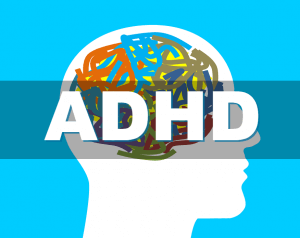
Several studies have been done to examine the influence of auditory stimuli on patients with ADHD. The results were promising, though none of them answered the main question — if they can be implemented as a certified treatment soon. Numerous reviews on the internet express very skeptical opinions, the users claim that there is no scientifically proven evidence of binaural beats’ effectiveness. Most medical professionals also prefer to stick to more traditional therapies, pending the results of further research.
Memory and Cognitive Abilities
Albert Einstein said that music gave him a lot of his intelligence and wisdom. Back in the twentieth century, people even believed that the symphonies by Mozart possessed the special power to make their kids smarter. The phenomenon of music’s influence on the brain was studied and the researchers came to the conclusion that it may be based on brainwave entrainment. The same mechanisms are employed by binaural beats, thus they can cause similar effects.
Indeed, during the scientific research it was discovered that different oscillations induce different types of memory. Hypothetically, theta waves can improve working memory, while gamma beats induce long-term retention and help hold large loads of information. Other investigations assume that alpha and gamma beats can provide cognitive enhancement. Auditory stimulation may increase creativity, learning capacities, and overall cognition. Still, the current results of the studies leave further research to be desired.
Science Explanation: Are They Really Effective?
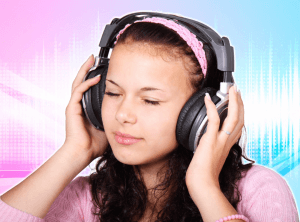
- the articles of two young binaural beats experts from Mahidol University, Thailand: N. Jirakittayakorn and Y. Wongsawat. Young scientists explored the ways the brain responds to 6 and 40 Hz binaural oscillations;
- a paper by PhDs T. L. Huang and C. Charyton, titled “A Comprehensive Review of the Psychological Effects of Brainwave Entrainment.” The authors assert that binaural beats therapy can become an effective therapeutic instrument to alleviate maladies such as Alzheimer’s disease, dementia, learning disability, and even premenstrual syndrome;
- the survey conducted by the experts from Montreal Clinique Psyché, where they measured the level of anxiety in patients exposed to auditory stimulation. 15 examinees listened to theta and delta binaural beats 10-17 times, each recording lasted half an hour. All research participants reported notable improvement in their health;
- the findings of Dr. Vincent Giampapa, MD. He claims that binaural beats decrease cortisol levels, while also increasing melatonin and androstenolone. This enhances immunity, improves the sleep-wake cycle, and reduces the responses to stress;
- the article “The impact of binaural beats on creativity” from November 2013, published in Frontiers in Human Neuroscience. Another research that reviewed the effectiveness of gamma oscillations to enhance cognitive functions has been done by German scientists and published in Frontiers in Psychology magazine in 2016;
- the study of Drs. J.D. Lane, S.J. Kasian, and others, who investigated the influence of brainwave entrainment on mood and vigilance;
- the pilot study of the University of South Florida, Tampa. The doctors examined the capacity of auditory stimulation to treat ADHD;
- and a couple of other scientific works and user reports on the net.
Despite numerous available studies and their promising results, the official medical science is not in a hurry to accept them and approve binaural beats for the treatment of brain ailments. Some experts claim that oftentimes the conflict of interest is present in such investigations, as their authors are paid by the companies that produce or sell the binaural beat soundtracks, software or headphones.
Most of the publications conclude that further research is necessary to understand the nature of binaural beats and their influence on brain performance. In addition, the conclusions of many studies are rather controversial, in some cases the beats seem to cause no effects at all. Thus, the science says “I do not know yet.” Still, it does not mean that you cannot try it on your own. Listen to the tracks and see if your headache goes away, or memory and concentration improves.
Are Binaural Beats Dangerous?

Obviously, everything that changes brain performance cannot be used while operating heavy machinery, driving cars, or performing complex tasks. Overdosing binaural beats means listening to them for hours, day after day. There are very few reports on this, some people say that frequent and prolonged exposure to brainwave entrainment can cause headaches. The same side effects may occur if the music in the headphones is too loud.
Tips to Make Listening More Effective
Here are some pieces of advice on how to use binaural beats safely and effectively:
- first of all, you will need stereo headphones;
- find a quiet and comfortable place;
- avoid any kind of distractions;
- each session should not be more than 30 minutes, otherwise you may develop migraines;
- have patience, there is no guarantee that you will feel the full effect on the first try.
As you see, it is very easy. Remember, though, that like any medicinal product, binaural beat tracks should be professionally designed and compressed. There are huge amounts of tracks available online for free, but we know that the only free cheese is in the mousetrap. Do not jeopardize your health, it is better to consider buying the high-quality tracks on reputable, special websites or online services like iTunes.
Conclusion
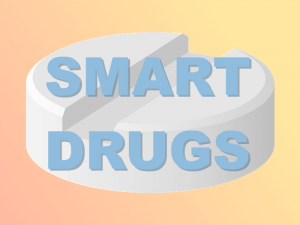
Still, if you need a professional and approved brain-boosting drug, you should resort to the medications from our online pharmacy ModafinilXL. We provide our customers with pills that contain modafinil and armodafinil — well-known and effective nootropics and eugeroics. They provide alertness, motivation, better memory, and improved cognition. Our tablets, among which you can find the popular Indian brands Modvigil and Artvigil, aid students in learning and intellectual workers in performing their professional duties.
Our drugs are surprisingly budget-friendly, but this is not due to poor quality. For only $1.29 per one tablet you get the guaranteed effects of the most popular smart drugs. Moreover, bitcoin payers save 20% on their total bill. You will get a tracking code within 3 days after you place an order, and your parcel will be at your doorstep in maximum 18 days. In case you do not get the delivery for any reason — we will refund all your money. If you do not know which tablet is good for you, you can try our free samples. Otherwise, purchase one of our drugs and feel all the benefits of cooperation with ModafinilXL.

 Order Free Artvigil 150 mg Armodafinil 10 Samples Online
Order Free Artvigil 150 mg Armodafinil 10 Samples Online Generic Modalert 200mg Modafinil 10 Samples Pack
Generic Modalert 200mg Modafinil 10 Samples Pack
